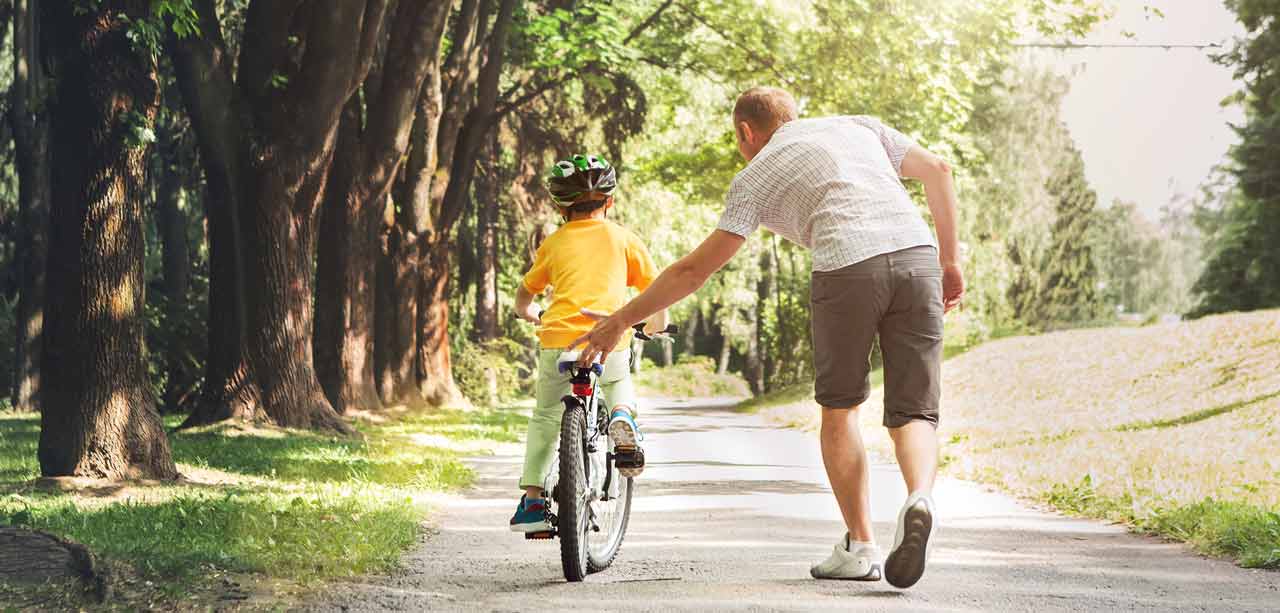It’s one of the shining moments of parenthood. Your child pedals a bike without training wheels for the first time. It’s a moment filled with pride, but the period leading up to it can be stressful for both you and your child.
If your child learned to ride a tricycle first, then transitioned to a two-wheeler with training wheels, learning to pedal without the extra stability provided by those bikes can be difficult. It’s likely that you will spend a fair amount of time running along behind, holding your child up until he gets the hang of balancing. There may be some scraped knees, tears, and frustration.
Luckily, there’s a new way to teach your child to ride a bicycle that can be much easier for both of you: the balance bike.
What Is a Balance Bike?
A balance bicycle#AD is a small bike with only two wheels but no pedals. Upon first seeing it, it can cause a lot of head-scratching among adults who learned to ride with training wheels. What on Earth is your child supposed to do with a bike that doesn’t have pedals?
Well, the idea behind using a balance bike to teach a child to ride is this: it isn’t the pedaling part that’s difficult to learn. It’s the balancing part. Balance bikes teach children the more difficult balancing part of bike riding first.
How Does a Balance Bike Work?
When you first give a 2- or 3-year-old child a balance bike, she will need your help throwing a leg over it. Then she’ll probably walk along, pushing it with her, for a few steps at a time. It will seem quite boring and anti-climactic, and it’s likely that you will shake your head and wonder how this will ever teach your kid anything.
Oh, but just wait. Over the next several months, with your encouragement to ride, you will see your child gradually start to sit on the balance bike’s seat to walk it along. Then, one day, you’ll see a glimpse of something incredible. As she’s walking, she’ll suddenly give a bit longer of a push than usual and glide just a foot or so before putting the other foot down. And that’s it: the beginning of learning to balance.
As time goes on, those small glides will turn into long ones, until your child can hold both feet up for greater distances than you ever expected. She’ll learn to steer, navigate around corners, and even go over curbs.
Then, one day, you’ll both decide it’s time for pedals.
Here’s where the magic happens.
The Conversion to a Pedal Bike
It may be difficult to do, but resist the urge to put training wheels on your child’s new pedal bike. Simply make sure that the seat and fork heights are set properly, find a smooth, traffic-free area, and do what you would normally do with a child just learning to pedal.
Hold on to the back of the seat and one of the grips if you need to. Coach your child to put her feet on the pedals, and give her a push. Hold onto her until you feel that she is balanced and pedaling, and then let go.
Parent after parent of children who first learned on a balance bike will tell you how amazing it is to see a child pedal successfully, without ever using training wheels, in an incredibly short periods of time. Kids as young as 3 can pedal a two-wheeler when trained first on a balance bike.
After all, the child trained on these special bikes#AD already knows how to balance. Once she learns to pedal forward, which doesn’t take long at all, there’s nothing left to do but ride!
